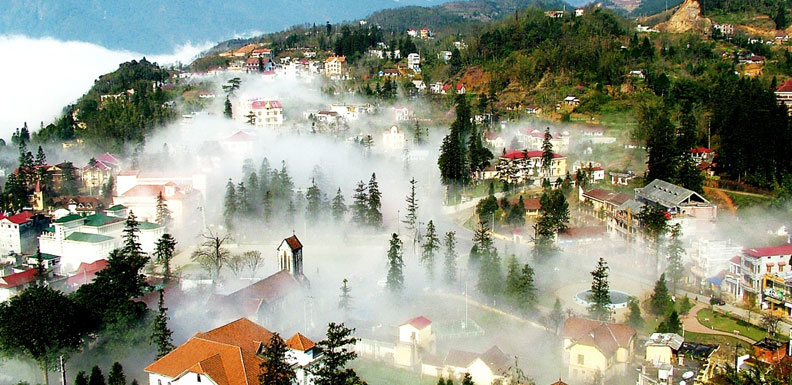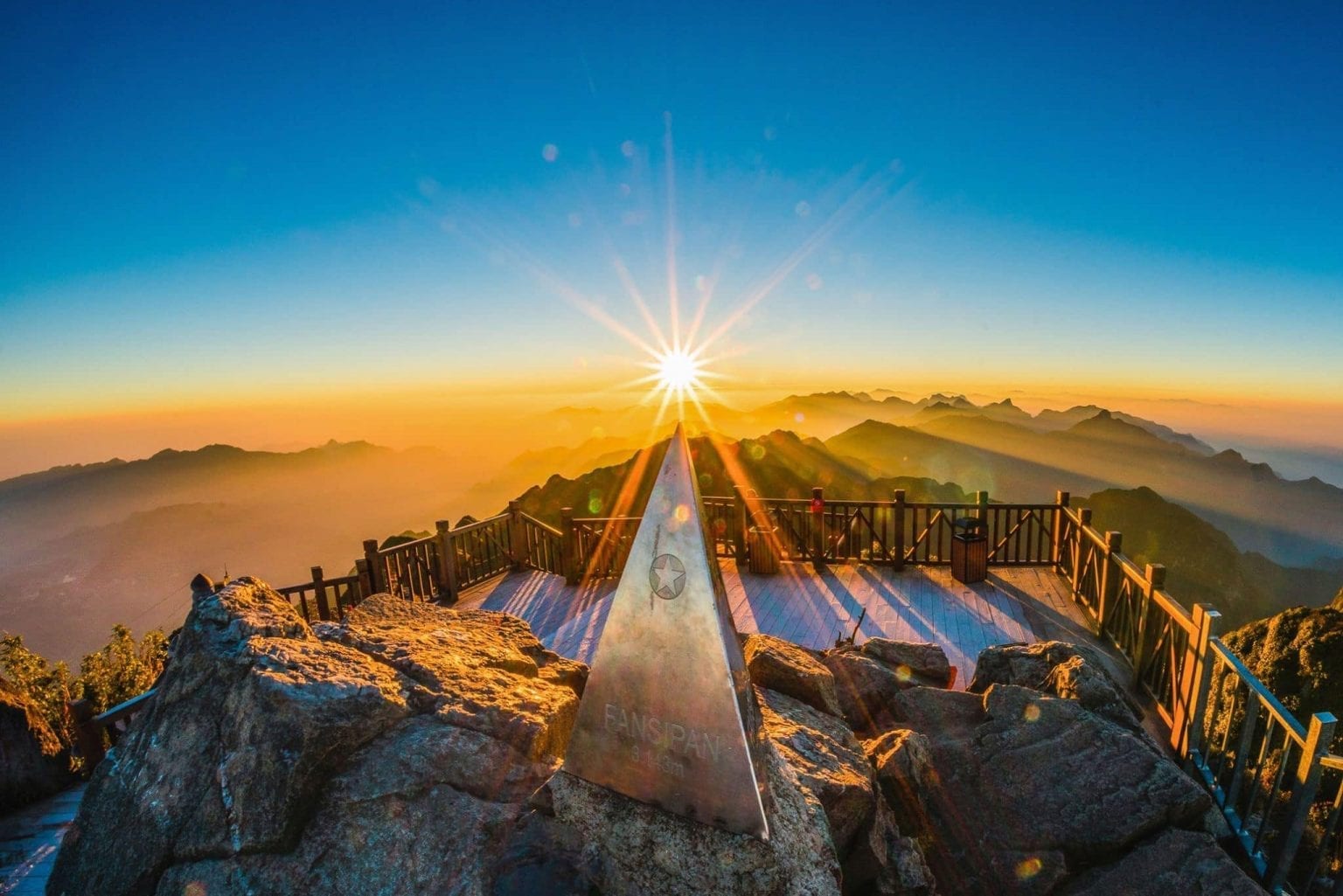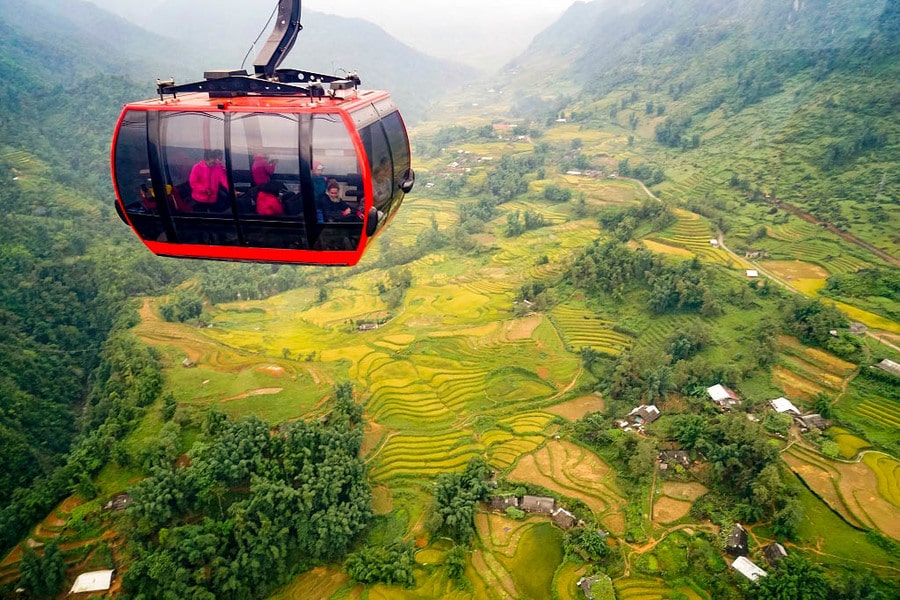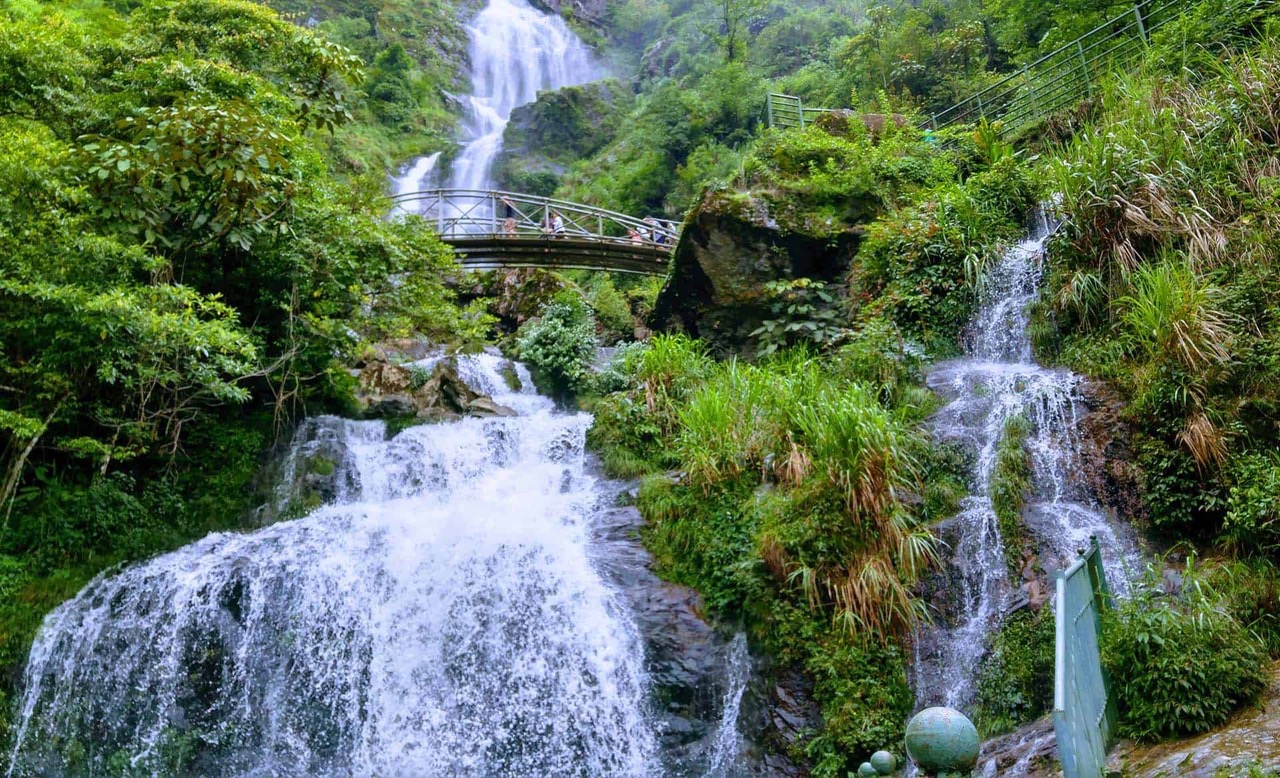1. Introduction
The road from Hanoi to Sapa, Vietnam, is just not about attaining a place; it’s an adventure in itself. Situated north of Vietnam, Sapa is quite famous for its terracing rice fields, ethnic minority villages, and Mountain Fansipan. Many tourists start their journey from the capital city of Hanoi, who are desperate to get away from hustle-bustling city life to the cool and mountainous landscape that welcomes them from Hanoi to Sapa.The distance from Hanoi to Sapa is approximately 320 kilometers or about 200 miles. Though this does not sound like a long way, the mountainous nature of this area combined with the tortuous roads can lengthen travel time more than one might estimate. There are many different ways to cover this distance; the right way would, however, depend on budget, style of travel, and how much time one has.
Sapa Town
2. Best Ways to Travel from Hanoi to Sapa Vietnam
There are three main ways to travel from Hanoi to Sapa: by bus, train, or private car. Each option has its pros and cons, depending on what kind of experience you’re looking for.a. Bus from Hanoi to Sapa
One of the most popular and budget-friendly options is taking a bus from Hanoi to Sapa Vietnam. There are several bus companies offering comfortable, direct routes between the two destinations. The journey typically takes about 6-7 hours, and the buses are equipped with reclining seats, air conditioning, and Wi-Fi.Pros:- Affordable, with ticket prices ranging from $10 to $20.
- Direct route with no transfers.
- Many buses offer night services, allowing you to sleep through the journey.
- The winding roads in the mountains can make the ride bumpy.
- Less privacy and flexibility compared to private transport.
b. Train from Hanoi to Sapa
Taking the train from Hanoi to Sapa is another popular choice, especially for those who want a more scenic and relaxed journey. The train doesn’t go directly to Sapa but instead takes you to Lao Cai, the nearest city. From Lao Cai, you’ll need to take a 1-hour bus or taxi to reach Sapa.Pros:- Scenic views along the way.
- Comfortable sleeper cabins for overnight travel.
- A safer option for those prone to motion sickness on mountain roads.
- The journey is longer, taking about 8 hours by train and 1 hour from Lao Cai to Sapa.
- Requires a transfer from Lao Cai to Sapa, adding an extra step to your journey.
c. Private Car from Hanoi to Sapa
For those who prefer a more personalized experience, hiring a private car is the most convenient option. The driver will pick you up from your location in Hanoi and drive directly to Sapa from Hanoi, making stops along the way if you wish.Pros:- Flexibility in timing and stops along the journey.
- More comfortable and private than a bus or train.
- Faster than the train, with the journey taking around 5-6 hours.
- More expensive, typically costing between $150 to $250 for a one-way trip.
- Not ideal for solo travelers due to the higher cost
3. What to Expect Along the Journey
Whether you travel by bus, train, or car, the journey from Hanoi to Sapa Vietnam offers beautiful views and a glimpse into northern Vietnam’s rural life. As you leave the bustling streets of Hanoi behind, you’ll pass through small towns, rice paddies, and rolling hills. As you approach Sapa, the landscape transforms into towering mountains, lush valleys, and vibrant green rice terraces.The journey can be long, but the breathtaking scenery makes it worthwhile. For many, the trip is a highlight in itself, offering a peaceful transition from the busy streets of Hanoi to Sapa‘s serene mountain environment.4. Best Time to Travel from Hanoi to Sapa
The best time to make the trip from Hanoi to Sapa depends on what kind of experience you’re after. Sapa has distinct seasons, each offering something different:- March to May (Spring): This is the best time for trekking, as the weather is mild, and the flowers are blooming. It’s also less crowded compared to the peak summer months.
- September to November (Autumn): Another excellent time to visit Sapa, especially in late September when the rice fields turn golden. The cooler weather makes it perfect for outdoor activities.
- December to February (Winter): While it’s much colder during this period, Sapa occasionally experiences snowfall, offering a unique experience for visitors who want to see a winter wonderland in Vietnam.
- June to August (Summer): These are the rainy months in Sapa, which can make trekking more difficult. However, the landscape is lush and green during this time.
5. Tips for Traveling from Hanoi to Sapa Vietnam
Here are a few tips to ensure your journey from Hanoi to Sapa Vietnam goes smoothly:- Book in advance: Whether you’re taking the bus, train, or private car, it’s best to book your tickets in advance, especially during peak seasons.
- Pack light: If you’re planning to trek in Sapa, pack only what you need for a few days and leave excess luggage in Hanoi. Most hotels in Hanoi offer luggage storage services.
- Prepare for weather changes: Sapa’s weather can be unpredictable, so pack layers, even if you’re traveling during the warmer months.
- Travel at night: If you want to maximize your time in Sapa, consider taking an overnight bus or train, so you can arrive in the early morning and start exploring right away.
6. Top Attractions in Sapa: A Detailed Guide on What to Do Upon Arrival
Sapa is a treasure trove of natural beauty and cultural experiences. Here are the top attractions you should explore in detail:1. Fansipan Mountain: “Roof of Indochina”Standing at 3,143 meters, Fansipan is the tallest mountain in Vietnam. Adventurers can choose between a challenging hike that takes 1-2 days, depending on the route, or opt for the cable car ride, which offers a spectacular view of the surrounding valleys and mountains. Once you reach the summit, you’ll be greeted by a panoramic vista of clouds and mountains, especially during sunrise or sunset.
Fansipan
2. Trekking in Muong Hoa ValleyThis valley is famed for its breathtaking rice terraces and is home to several ethnic minority groups, including the Hmong, Dao, and Tay. Guided treks through Muong Hoa Valley typically last a few hours to a full day, depending on your route, and offer scenic views of rice paddies cascading down hillsides. Don’t miss the chance to visit the ancient Muong Hoa stone carvings, which are believed to be thousands of years old.
Muong Hoa Valley
3. Cat Cat VillageJust a 3 km walk from Sapa town, Cat Cat Village is an ideal spot to immerse yourself in the culture of the Black Hmong people. The village is famous for its traditional handicrafts, including weaving and silver jewelry. You can witness how the locals make their textiles, experience their traditional wooden houses, and take in the picturesque waterfall nestled at the end of the village. Be prepared for a steep walk back up after exploring!
Cat Cat Village
4. Silver Waterfall and Love WaterfallSilver Waterfall is located about 12 km from Sapa town and is accessible via a short hike. It is named after the way the water gleams in the sunlight as it cascades down from a height of 100 meters. Nearby, you’ll find Love Waterfall, which has a romantic backstory tied to local legends. A short trek through the forest leads you to the base of the waterfall, where you can enjoy the tranquil setting surrounded by lush greenery.
Silver Waterfall
These attractions provide a balance of physical activity, cultural insight, and the chance to connect with the breathtaking landscapes of northern Vietnam.